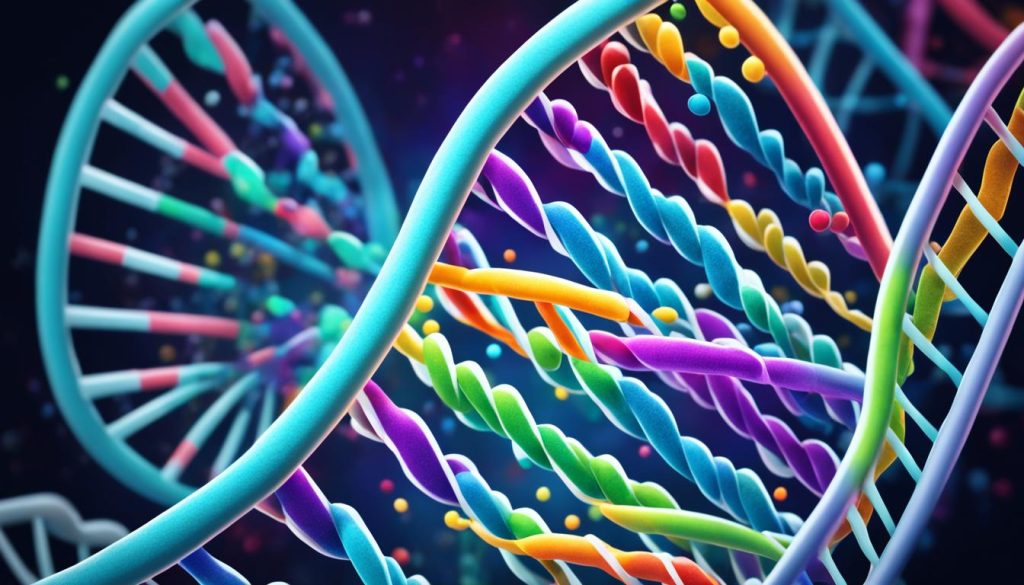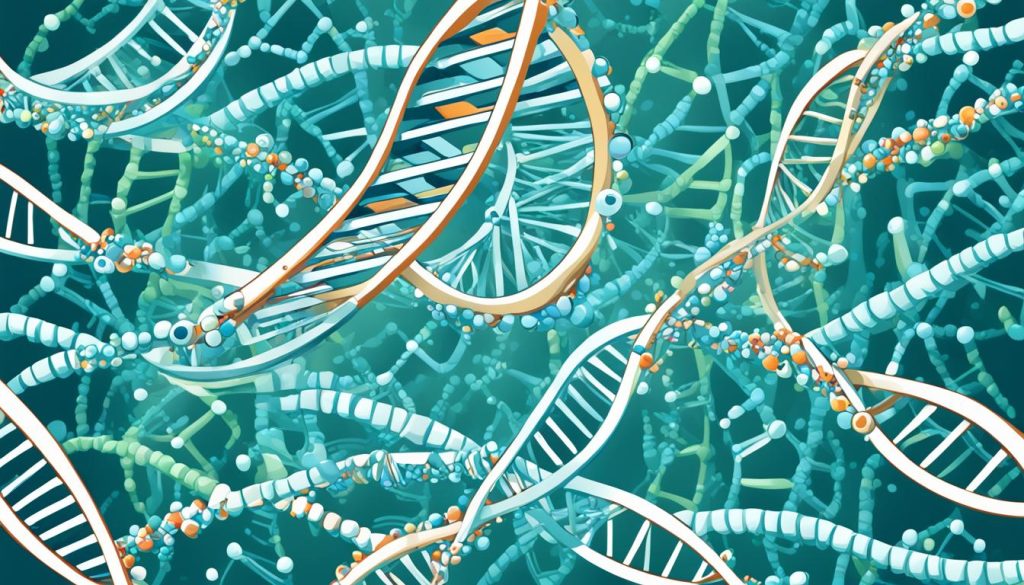DNA evidence has changed the criminal justice system a lot. It now plays a key role in how cases are looked into and defended1. This technology helps find important facts and reveal the truth, changing the game in criminal defense. It can clear innocent people, find the real culprits1, and prove guilt or innocence2.
The accuracy of DNA analysis is crucial. Thanks to technology, we can use DNA in more ways1. DNA has greatly impacted the criminal justice system. It shows how important science, accuracy, and fairness are in finding justice.
Key Takeaways
- DNA evidence has been crucial in exonerating individuals wrongfully convicted and identifying actual perpetrators.
- Advances in DNA testing technology, such as touch DNA analysis, have increased the precision and potential uses of DNA evidence.
- Challenges to DNA evidence include issues with the chain of custody and the qualifications and credibility of expert witnesses.
- DNA evidence has prompted reforms in the criminal justice system, impacting the way cases are investigated, evidence is handled, and trials are conducted.
- Prosecutors rely on various types of forensic evidence, including DNA analysis, fingerprints, ballistics, and trace evidence, to build their cases.
- https://finserviceshub.com/inflation-insights-what-every-investor-needs-to-know-right-now/
Exonerating the Wrongfully Accused
DNA evidence has changed the game in freeing those wrongly convicted. Groups like the Innocence Project use DNA tests to prove innocence. By July 31, 2016, they helped clear 342 people, with 46% of these cases involving bad forensic science3.
The National Registry of Exonerations (NRE) shows how crucial DNA is. It found 133 DNA cases where forensic science was a key factor3. In fact, bad forensic science was a factor in 24% of all exonerations since 1989, not just DNA cases3.
Innocence Projects and DNA Exonerations
The first DNA exoneration was in 1989. Since then, 375 people have been cleared through DNA evidence across 37 states4. These individuals were wrongly imprisoned for 14 years on average, totaling 5,284 years4. They were 26.6 years old when wrongly convicted and 43 years old when cleared4.
21 of these 375 exonerees were once on death row, and 44 were wrongly accused and pleaded guilty4. These stories show how dna exoneration can right wrongs and give back lives to the innocent.
| Factors Contributing to Wrongful Convictions | Percentage of Cases |
|---|---|
| Eyewitness Misidentification | 69%4 |
| Misapplication of Forensic Science | 43%4 |
| False Confessions | 29%4 |
| Informants | 17%4 |
The work of innocence projects and dna exoneration goes beyond clearing names. It has led to the identification of 165 actual criminals, resulting in new convictions4. This shows the value of these efforts in solving crimes and preventing future ones.
“DNA evidence has the power to rectify miscarriages of justice and bring closure to individuals who have spent years behind bars for crimes they did not commit.”
Identifying the Real Culprits
DNA evidence has changed how we solve crimes. It helps find the real people behind crimes. By comparing DNA from crime scenes with known offenders, police can catch serial criminals and solve cold cases5.
Since 1986, forensic DNA has been a key tool in criminal cases5. There are many types of DNA evidence, like fingerprints and bloodstains5. This evidence can be amplified to identify suspects5.
Methods like PCR and STR help analyze DNA. Y-Chromosome DNA tests identify males, while Mitochondrial DNA comes from mothers5.
DNA evidence is key in proving guilt5. It’s very accurate because of its unique sequences5. But, it can be tainted by other DNA, and DNA planting is a defense tactic5.
It’s more reliable than other evidence like fingerprints6. The Criminal Justice Act of 2014 lets Gardaí take DNA from arrested individuals6.
Since 1994, DNA analysis has been more common in courts7. It can prove facts or raise doubts about an assault7.
“DNA evidence can establish the presence of the accused and the victim together, potentially indicating contact, but it cannot independently prove whether the interaction was consensual or not.”7
There are risks like unusable samples or falsified evidence7. Jurors might overestimate DNA’s power due to media7. Defense lawyers must explain its limits7.
If the accused’s DNA isn’t found, defense teams might argue for dropped charges7. If the accused was there but didn’t commit the crime, it gets harder to prove7.

The Kobe Bryant case shows how DNA from others can raise doubts about consent7.
| Type of DNA Evidence | Description |
|---|---|
| Fingerprints | Unique patterns on the skin of the fingers and thumbs |
| Bloodstains | Blood left at the crime scene can contain DNA |
| Bodily Fluids | Saliva, semen, or other bodily fluids can contain DNA |
| Skin Cells | Skin cells shed at the crime scene can contain DNA |
DNA evidence, criminal cases, legal proof
Providing Definitive Proof
When someone says they’re innocent, DNA evidence can prove they’re telling the truth8. For lawyers defending them, DNA is a strong argument against the prosecution8. It can show the accused wasn’t at the crime scene, or that the evidence doesn’t match them8.
It can also challenge the prosecution’s story, offering other ways the DNA might have gotten there8.
Even though DNA isn’t always 100% right, it’s still a key part of solving crimes9. But lawyers must check the DNA evidence carefully to make sure it’s reliable9. They need experts to help understand the complex science behind DNA8.
Lawyers also have to explain DNA science in simple terms for the jury8. They must make sure the jury gets the full picture, including the limits of DNA evidence8. There are also big questions about privacy and fairness in using DNA databases8.
At the end, DNA is a big deal in criminal cases, but we have to be careful with it8. Lawyers need to use DNA well, knowing its strengths and weaknesses8.
“DNA evidence has the unique power to conclusively demonstrate innocence when the accused’s DNA does not match that found at the crime scene.”
The Significance of Accurate DNA Analysis
DNA analysis is a key tool in the criminal justice system. It helps identify suspects and clear the names of the innocent10. But, it’s crucial to get DNA analysis right. Mistakes can lead to wrongfully convicted people or the release of guilty ones11.
To make sure DNA evidence is trusted in court, strict quality checks and detailed forensic analysis are needed10. New DNA testing tech has made this process more precise. This means DNA can be used more in defending against crimes11.
How DNA samples are handled, the fairness of labs, and clear reporting are key. These factors help make DNA profiling useful in justice11. By keeping DNA analysis high-quality, we can catch the real criminals and free the wrongly accused. This helps in the fight for justice.
Even though DNA evidence is powerful, it’s used in only about 1% of criminal cases11. The government had a big backlog in DNA analysis in 2001, with over 900 cases10. To fix this, the government has given a lot of money to speed up DNA testing. This shows how important accurate and quick DNA analysis is.
“DNA evidence has been key in clearing or convicting people in violent crimes like rape and murder.”11
The criminal justice system depends more on DNA analysis. So, we need strong quality control and fast DNA sample processing. By keeping forensic testing top-notch, DNA evidence stays a trusted tool for justice. It helps clear the innocent and find the real culprits.
Conclusion
In the criminal defense world, DNA evidence is a key tool for finding the truth and protecting accused rights. It can clear innocent people, boost defense cases, and question the prosecution’s claims12. The need for precise DNA analysis is huge, and legal fights over DNA evidence are vital for its trustworthiness13. DNA evidence has changed the criminal justice system for the better, showing how important science, accuracy, and fairness are in justice14.
As technology gets better, DNA evidence will keep changing its role in criminal defense. But its core role in defending accused rights stays strong. DNA evidence is key in making the justice system better, ensuring it works with the highest standards of precision and honesty12. Knowing how DNA evidence works in the criminal justice system helps you fight for the accused’s rights and keep the legal system fair and unbiased.
The growth of DNA evidence in criminal cases has changed the criminal justice system a lot. As you work in this changing field, remember your job is to keep justice fair. You must follow the principles of accuracy, fairness, and protecting everyone’s rights14.
FAQ
How has DNA evidence revolutionized the criminal justice system?
DNA evidence has changed how crimes are solved and defended. It reveals important facts and uncovers the truth. This can clear innocent people, find the real culprits, and prove guilt beyond doubt.
How has DNA evidence been used to exonerate the wrongfully accused?
DNA tests have shown many times that the wrong person was locked up. This has led to the release of those wrongly accused. Groups like the Innocence Project use DNA to fix past wrongs and give peace to the innocent.
How can DNA evidence help identify the real perpetrators of crimes?
By comparing DNA from crime scenes with known offenders, police can find the real culprits. This has solved old cases and caught dangerous criminals who were hiding.
How can DNA evidence be used as a defense in criminal cases?
DNA evidence can prove a defendant wasn’t involved in a crime. It can show they were somewhere else, or that the crime scene DNA doesn’t match them. This can challenge the prosecution’s case.
Why is the accuracy and reliability of DNA analysis so important?
Wrong DNA results can wrongly convict someone or free a guilty person. It’s crucial to have strict quality checks and careful forensic analysis. This makes sure DNA evidence is trusted and allowed in court.
How have advances in DNA testing technology impacted its use in criminal defense?
New DNA technology makes it more powerful and accurate. This means DNA can be used more in defending against crimes. As technology gets better, DNA will play a bigger role in justice, focusing on science, accuracy, and fairness.

